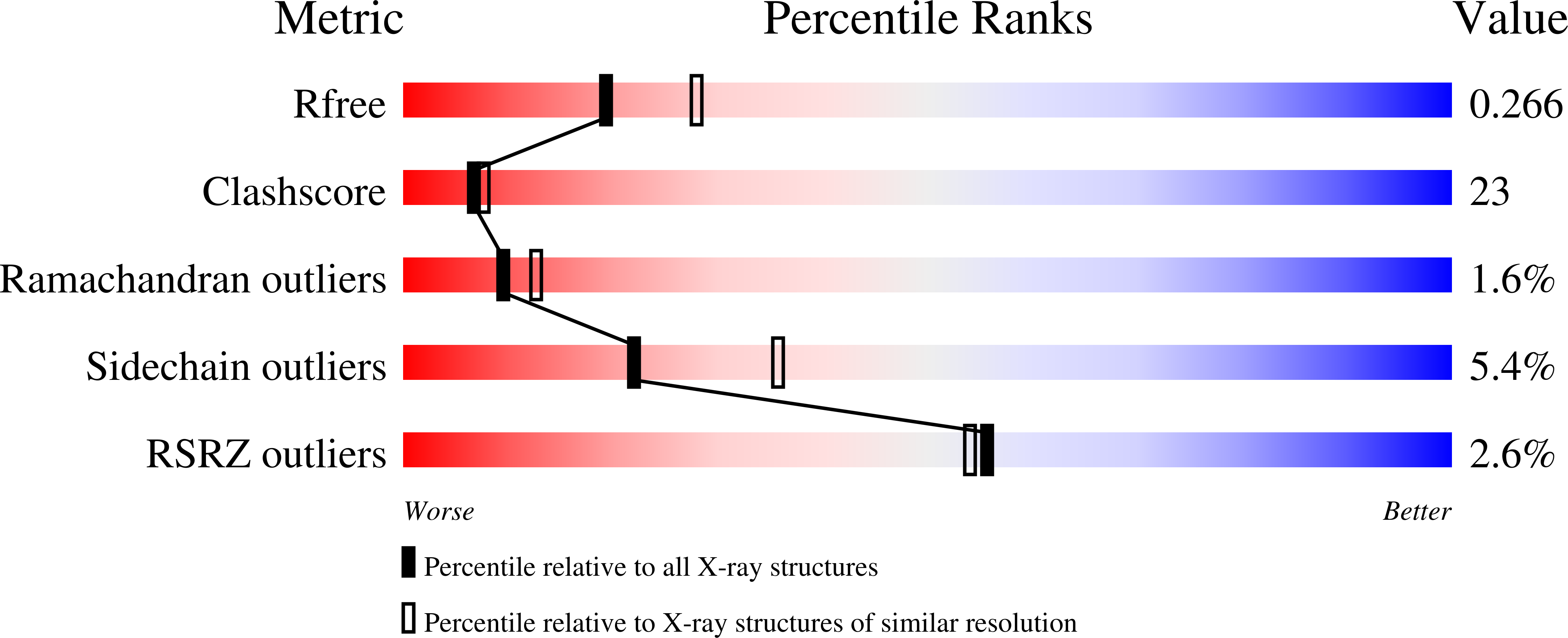Crystal structure of beta-D-xylosidase from Thermoanaerobacterium saccharolyticum, a family 39 glycoside hydrolase.
Yang, J.K., Yoon, H.J., Ahn, H.J., Lee, B.I., Pedelacq, J.D., Liong, E.C., Berendzen, J., Laivenieks, M., Vieille, C., Zeikus, G.J., Vocadlo, D.J., Withers, S.G., Suh, S.W.(2004) J Mol Biol 335: 155-165
- PubMed: 14659747
- DOI: https://doi.org/10.1016/j.jmb.2003.10.026
- Primary Citation of Related Structures:
1PX8, 1UHV - PubMed Abstract:
1,4-beta-D-Xylan is the major component of plant cell-wall hemicelluloses. beta-D-Xylosidases are involved in the breakdown of xylans into xylose and belong to families 3, 39, 43, 52, and 54 of glycoside hydrolases. Here, we report the first crystal structure of a member of family 39 glycoside hydrolase, i.e. beta-D-xylosidase from Thermoanaerobacterium saccharolyticum strain B6A-RI. This study also represents the first structure of any beta-xylosidase of the above five glycoside hydrolase families. Each monomer of T. saccharolyticum beta-xylosidase comprises three distinct domains; a catalytic domain of the canonical (beta/alpha)(8)-barrel fold, a beta-sandwich domain, and a small alpha-helical domain. We have determined the structure in two forms: D-xylose-bound enzyme and a covalent 2-deoxy-2-fluoro-alpha-D-xylosyl-enzyme intermediate complex, thus providing two snapshots in the reaction pathway. This study provides structural evidence for the proposed double displacement mechanism that involves a covalent intermediate. Furthermore, it reveals possible functional roles for His228 as the auxiliary acid/base and Glu323 as a key residue in substrate recognition.
Organizational Affiliation:
Structural Proteomics Laboratory, Department of Chemistry, College of Natural Sciences, Seoul National University, 151-742, Seoul, South Korea.















